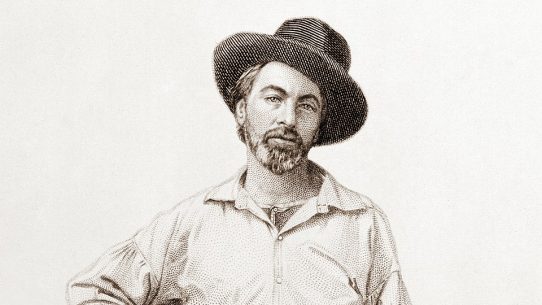Thomas Hardy (1840–1928) stands as one of the defining literary voices of the late Victorian and early modern eras — a novelist, poet, and thinker whose work bridges realism, romanticism, and fatalism.
Though best known during his lifetime for his novels, Hardy considered himself first and foremost a poet. His verse, rich with melancholy and moral reflection, examines the limits of human freedom against the vast indifference of nature and fate.
Through both fiction and poetry, Hardy gave voice to the struggles of ordinary lives shaped by love, loss, and time’s relentless passage. His blend of compassion and tragic insight remains central to modern English literature.
Early Life and Education
Hardy was born on June 2, 1840, in Higher Bockhampton, a small village in Dorset, England — the rural landscape that would later become his mythical “Wessex.” His father, Thomas Hardy Sr., was a stonemason and builder, while his mother, Jemima, possessed a sharp intellect and deep love for literature. She nurtured his early education, encouraging reading and reflection. Hardy attended local schools before apprenticing with the architect John Hicks in Dorchester, where he trained in church restoration. Though his early profession was architectural, his real passion lay in observing the human stories of the countryside around him.
In 1862, Hardy moved to London to pursue architectural work and further studies. There he absorbed the intellectual ferment of the time, reading Darwin, Mill, and Comte — thinkers whose ideas about evolution, progress, and human limitation would profoundly shape his worldview. Yet the city also alienated him. By the late 1860s, he returned to Dorset, resolved to make his living as a writer, drawing on the rural life he knew so intimately.
Literary Career and Major Works
Hardy’s first novel, Desperate Remedies (1871), was followed by Under the Greenwood Tree (1872) and Far from the Madding Crowd (1874), which established him as a major novelist. His fiction portrayed the transformation of rural England under industrial modernity, blending realism with mythic vision. Works such as The Return of the Native (1878), The Mayor of Casterbridge (1886), Tess of the d’Urbervilles (1891), and Jude the Obscure (1895) explore the tension between individual desire and the oppressive structures of class, convention, and fate.
The moral outcry following Jude the Obscure — condemned for its frank treatment of sexuality and religion — led Hardy to abandon novel-writing altogether. He turned fully to poetry, a form that had always been closest to his heart. His first collection, Wessex Poems (1898), drew on decades of private writing. Subsequent volumes — including Poems of the Past and the Present (1901), Time’s Laughingstocks (1909), and Moments of Vision (1917) — revealed a poet of haunting precision and philosophical gravity. His Collected Poems (1919) confirmed his stature as one of the most distinctive poetic voices of his generation.
Hardy’s poetry often revisits the same themes as his novels: human vulnerability, the indifference of the cosmos, and the tragic beauty of fleeting moments. Yet in verse, his vision becomes more distilled — tender, ironic, and musical in its restraint. Pieces like The Darkling Thrush, During Wind and Rain, and Afterwards express his lifelong meditation on transience and endurance.
Style, Themes, and Influence
Hardy’s style combines the realism of Victorian fiction with the fatalism and lyricism of classical tragedy. His language is simple yet resonant, shaped by the rhythms of rural speech and the clarity of biblical prose. Thematically, he confronts the fragility of human happiness and the impersonal forces that shape destiny — what he called “the President of the Immortals.” Nature, in Hardy’s universe, is neither benevolent nor cruel; it simply is — vast, cyclical, and indifferent to human longing. Against this backdrop, love and memory become sacred forms of resistance.
In his poetry, Hardy’s use of irony and understatement gives emotional weight to ordinary experience. He wrote about aging, regret, and the ghosts of personal loss with unsentimental honesty. His late poems, especially those written after the death of his first wife, Emma, are among the most moving elegiac works in English literature.
While modernists like T. S. Eliot and Ezra Pound sought to break with Victorian tradition, they admired Hardy’s sincerity, technical control, and sense of history. His influence can be traced in the works of poets such as Philip Larkin, Ted Hughes, and Seamus Heaney, who saw in him a model of emotional truth grounded in everyday life.
Later Life and Legacy
Hardy’s later years brought recognition and stability. In 1914, he married Florence Dugdale, his secretary and biographer, who became a devoted companion. He continued to publish poetry into his eighties, refining his vision rather than softening it. Though he declined a knighthood, he accepted the Order of Merit in 1910 and became a figure of national esteem. His home, Max Gate — which he designed himself — became both retreat and workshop, filled with manuscripts and memories of his Wessex landscapes.
Hardy died on January 11, 1928, at the age of eighty-seven. His funeral reflected the duality of his life: his ashes were interred in Westminster Abbey’s Poets’ Corner, while his heart was buried in Stinsford Churchyard beside Emma. The gesture symbolized the two realms he inhabited — the national and the personal, the grand and the humble. Today, Hardy is revered as both the last great Victorian and a precursor of modern sensibility: a poet who confronted change without illusion, finding beauty even in the sadness of passing time.
Notable Works
Far from the Madding Crowd (1874)
The Return of the Native (1878)
The Mayor of Casterbridge (1886)
Tess of the d’Urbervilles (1891)
Jude the Obscure (1895)
Wessex Poems (1898)
Moments of Vision (1917)



